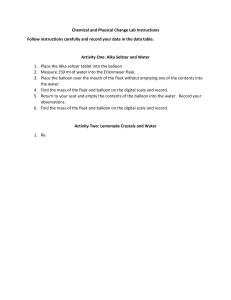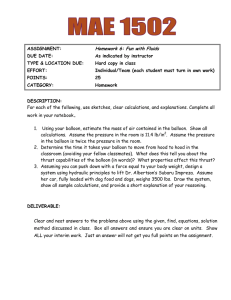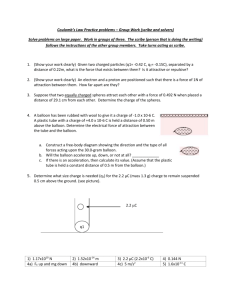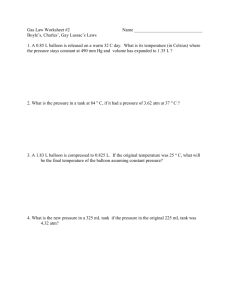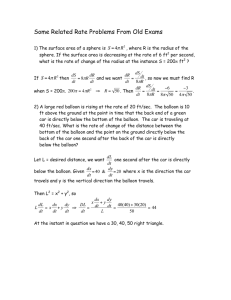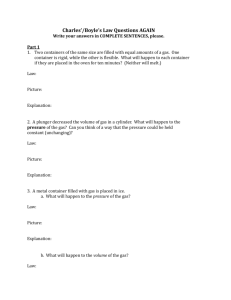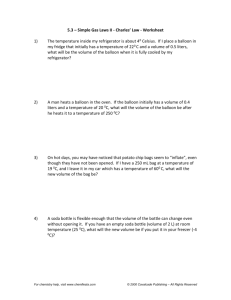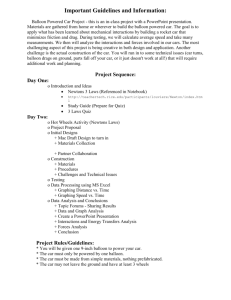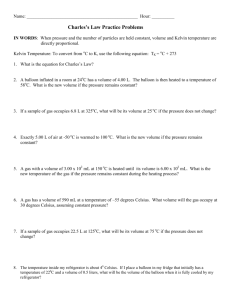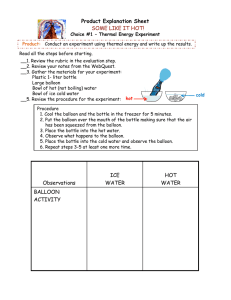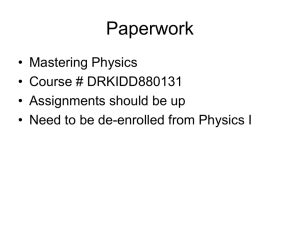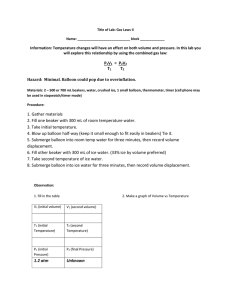Alka Seltzer and the Ideal Gas Law – Teacher Notes
advertisement
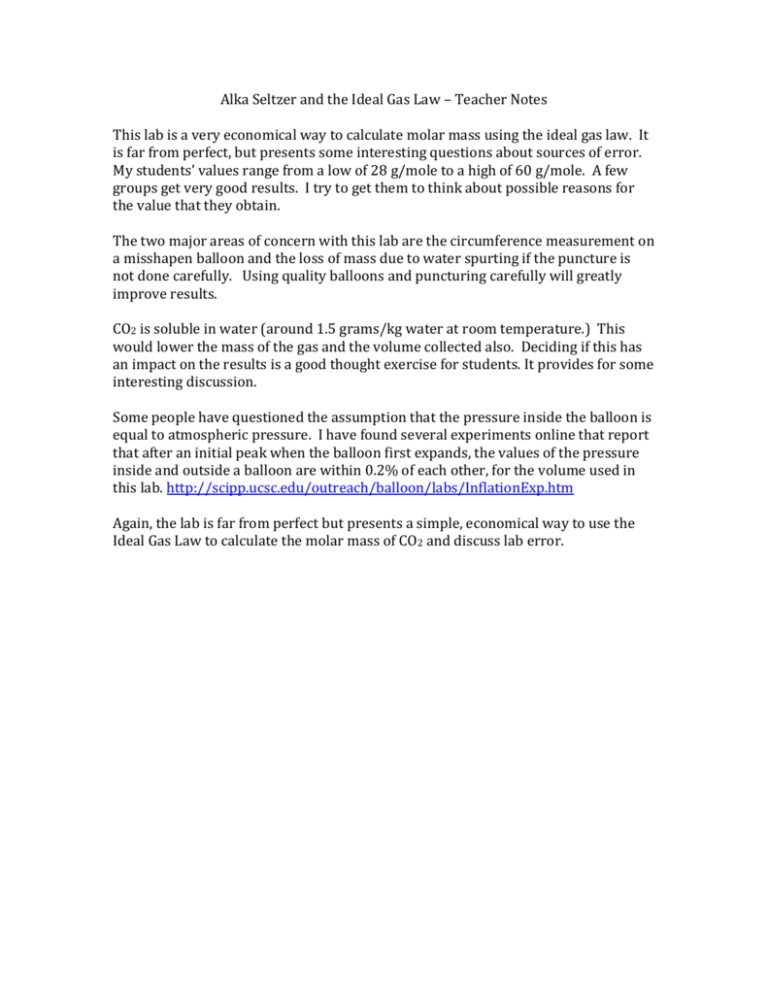
Alka Seltzer and the Ideal Gas Law – Teacher Notes This lab is a very economical way to calculate molar mass using the ideal gas law. It is far from perfect, but presents some interesting questions about sources of error. My students’ values range from a low of 28 g/mole to a high of 60 g/mole. A few groups get very good results. I try to get them to think about possible reasons for the value that they obtain. The two major areas of concern with this lab are the circumference measurement on a misshapen balloon and the loss of mass due to water spurting if the puncture is not done carefully. Using quality balloons and puncturing carefully will greatly improve results. CO2 is soluble in water (around 1.5 grams/kg water at room temperature.) This would lower the mass of the gas and the volume collected also. Deciding if this has an impact on the results is a good thought exercise for students. It provides for some interesting discussion. Some people have questioned the assumption that the pressure inside the balloon is equal to atmospheric pressure. I have found several experiments online that report that after an initial peak when the balloon first expands, the values of the pressure inside and outside a balloon are within 0.2% of each other, for the volume used in this lab. http://scipp.ucsc.edu/outreach/balloon/labs/InflationExp.htm Again, the lab is far from perfect but presents a simple, economical way to use the Ideal Gas Law to calculate the molar mass of CO2 and discuss lab error.





